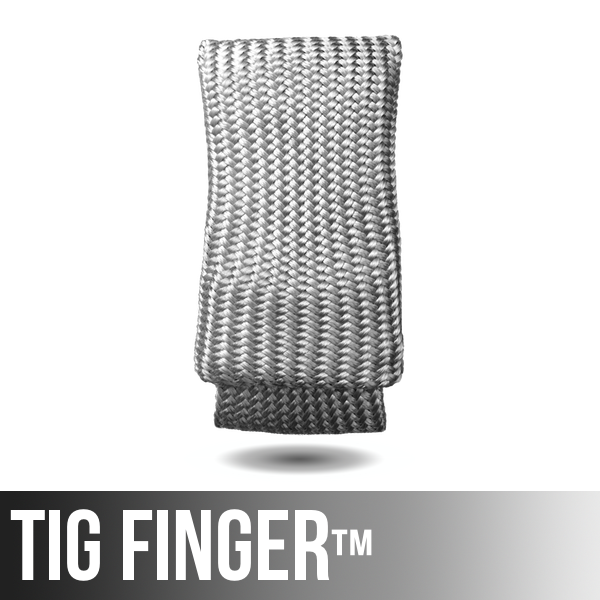Video Transcript
Welding Aluminum: MIG Spool Gun vs TIG
Hey. Jody here, with WeldingTipsandTricks.com. Last week’s video was part one of the aluminum awning build. We put together a lot of the structure in JD’s shop, all TIG welding with a 200 amp machine, full pedal for most of the welding. A lot of people ask why we didn’t use a spool gun. Why we didn’t MIG weld it. We certainly could have. Part two’s not ready yet. I want to wait until all the shots are finalized and the awning is hung in place where you can see the finished product.
For this video, I want to compare the speed, and the drawbacks, and the overlap areas and all that of TIG welding versus MIG welding aluminum. There is a lot of overlap. There are certain things where you could definitely TIG it and you can definitely MIG it. One’s faster sometimes, sometimes it’s only a little bit faster. Those are the kind of things we’re going to talk about today.
I’ve got some quarter-inch thick metal, that’s roughly 6mm thick metal. I’m going to compare travel speed, we’re going to look at some arc shots, and we’re going to cut and etch at the end. If you’re not sure what cut and etch means, just stick around to the end and you’ll know after you watch it. All right, let’s get into it.
When we get into part two of the awning build video, when all that’s done and I can show it, you’ll see JD running this machine off of a generator. Here, I’m using my machine at my shop. Setting it up for a spool gun, 100% argon, electrode positive, 4043 .035, and selecting three-sixteenths thickness and that’s what it spits out for me.
Now, I’ve always found that this particular machine, the wire feed speed settings are pretty high, especially for aluminum. You can either go by the machine default or the chart on the inside of the machine, but you can see, there, 590 inches a minute, 23 volts. I trimmed it down right away. Trimmed it down to 415 and even went a little lower than that and even burnt up a tip when I got around 400, so I settled in about 415. It ran better at closer to 400, but I was on that ragged edge, burning up tips, and I don’t like to burn up tips. You can see for part of the weld, here, will be no spatter and then you’ll see some spatter come in, but that humming sound is what you kind of want to go for. I just set the wire feed speed up a little higher than what was optimum just to keep from burning through tips.
A few things to consider when using a spool gun: Keep plenty of contact tips on hand. You just go through them more than you do with steel, and it’s hard to reuse them. Use a push gun angle. Sometimes you will have to pull, but use a push whenever you can. Argon or argon/helium mix. Don’t try using 75/25 or C25 gas like you would on steel. Have a good ground. It will help you get better starts. Think twice about welding anything thinner than a eighth or 3.2mm thick.
I used a little bit of oscillation on that last weld. A little bit of a, sort of a forward and back, or sort of a little series of cursive e’s, like I would on steel. You don’t have to do that. In fact here, I’m just going to follow a steady push motion with no real manipulation, no oscillation at all. After increasing my argon flow up to around 30 cfh, it seems like I’m getting pretty close here.
I set up a 12-inch long lap joint here. Quarter-inch thick, that’s roughly 6mm thick. I know that the gun angle looks like I’m pulling here. That’s just a kind of a camera thing. It’s a slight push angle. And, you know, as is often the case, that very last weld that I ran ran really nice, and this one’s not doing quite as nice. It’s one of the things I notice about using a spool gun is it’s like every time you pull the trigger, it seems like something different happens. I’m just doing a straight drag, or a straight push I should say, not moving the gun a whole lot, except for my shake.
That took 45 seconds to travel 12 inches. That equates to, the way you figure that out is you divide 12 by 45, you get .266. You multiply that times 60, you come up with 16 inches per minute of travel speed. Now, that makes for a weld that is okay. Doesn’t look nearly as good as the TIG weld and, hopefully, I get a little bit better at this. I could use some practice. I’ve seen some people that are just awesome, and I want to get there.
If I was doing this particular joint, which I did with TIG in the shop, this is just sort of a butt weld on eighth-inch thick material. I was motoring along pretty good here, but this joint probably would have gone quite a bit faster with a spool gun. I could have probably moved at a closer to 20 inches a minute because I’m not trying to fill in a quarter-inch fill in. I could go just about as fast as I wanted with the spool gun. But even here, I’m going probably 11 to 12 inches a minute. We just decided to use TIG in the shop. This particular weld will be visible from passersby. One of those welds that you see right when you walk up to the entrance where the awning’s going to hang, so kind of wanted it to look as good as it could look. And then for the field welds, we’ll use the spool gun off a generator.
While I was in my shop, though, I decided to set up a lap joint, quarter-inch, and try to go about as fast as I could go and still have some kind of control. I was kind of on the ragged edge of being out of control, trying to fill in that quarter-inch, pack some rod in there and not chew the edge off, and move as quickly as I possibly could. Get my feeder right, my wire feed hand moving as quickly as it could. Looking at this after the fact on the editing software, that took exactly one minute to travel 12 inches, which is, no formula needed, 12 inches a minute, compared to the 16 inches a minute that we did with the spool gun here. We’ll test them in a minute.
My experience with MIG welding aluminum with a spool gun has basically left me with the opinion that everything makes more of a difference than it does with steel. Everything was more sensitive. Gun angle, you want to push and not pull, whereas with steel, you can push, you can pull, straight in. There are subtle differences, but with MIG welding aluminum, if you pull you’re going to get soot. And a lot of times you’re going to get some porosity because that cleaning action doesn’t do what it’s supposed to do when you pull. You have to pull sometimes. Keep a stainless steel wire, toothbrush-style brush in your pocket. Helps you a lot when you get a little soot. Keep a lot of contact tips on hand. You go through a lot more contact tips than you do with steel. It’s hard to reuse them with aluminum because one little burr on the inside drags on that soft aluminum wire and just messes you up.
Wire feed speed. The machines and the charts tend to direct you to quite a bit higher wire feed speed than what you really need. I think that’s because they realize that if you use too low a wire feed speed, you’re really going to go through tips and it’s going to be frustrating. So, start off with the recommendation, and then trim it back from there. That’s some good advice. Once you get it really humming, in my experience anyway, when I get the perfect sound and the perfect spray transfer, I’m like on the borderline of burning back, so I usually add a little wire feed speed from there. I get that little crackle sound and a little bit of spatter. I’d rather have that than I would be going through 20 tips a day.
All right, let’s get back into the testing of the welds. We’re going to chop both of these right around the middle, and then we’ll do just a little bit of, just a two-step polish, basically, about a 120 grit followed by a Scotch Brite pad. The more you polish the better, but you can get a result with only just a little bit of polish. I’m using Easy-Off Oven Cleaner. That’s a good, easy thing to have on hand that does a pretty good job, for a test like this, for etching aluminum to bring out the difference between the weld nugget and the base metal.
That’s the TIG joint right there. Nothing glaringly wrong there. This is the MIG joint. The MIG weld. Could have polished it a little bit better, but we’ll get a result here anyway. Right away, you can see just a couple of fine pores, a little porosity, but the penetration? Pretty good. Not hugely different than the TIG weld. Aside from those two small pores, the welds are very similar, and the time is not hugely different on these two welds. That’s just good information to have in making a choice on which process to use. Again, in part two, we’ll use the spool gun because we’re, again, we’re in the field and it just makes more sense.
That about wraps it up. Remember, the way I support these videos is through my online store at WeldMonger.com. I appreciate your support. Thanks for watching.







June 27, 2018 at 1:39 AM
You ought to take part in a contest for one of the best websites on the net. I most certainly will highly recommend this web site!
May 19, 2017 at 2:48 PM
Greetings,
Whenever I can, I will select GTAW (tig) with mixed argon and helium (I blend my own according to circumstances ) and avoid excessively high frequency output or pulsing over GMAW (mig) for aluminum work except for either non-critical structures or very heavy work that can be adequately pre-heated a/o heat treated.
In general, I find aluminum welds performed using mig to be brittle.
I also find that across the board, people select spooled wire way too light. They end up trying to compensate with excessive wire feed speeds. The fine wire can not carry sufficient amperage and has a higher surface to volume ratio that introduces more contaminants to the puddle and simply is more demanding on the equipment.
Your thoughts appreciated.
Thanks for your time.
DPK.